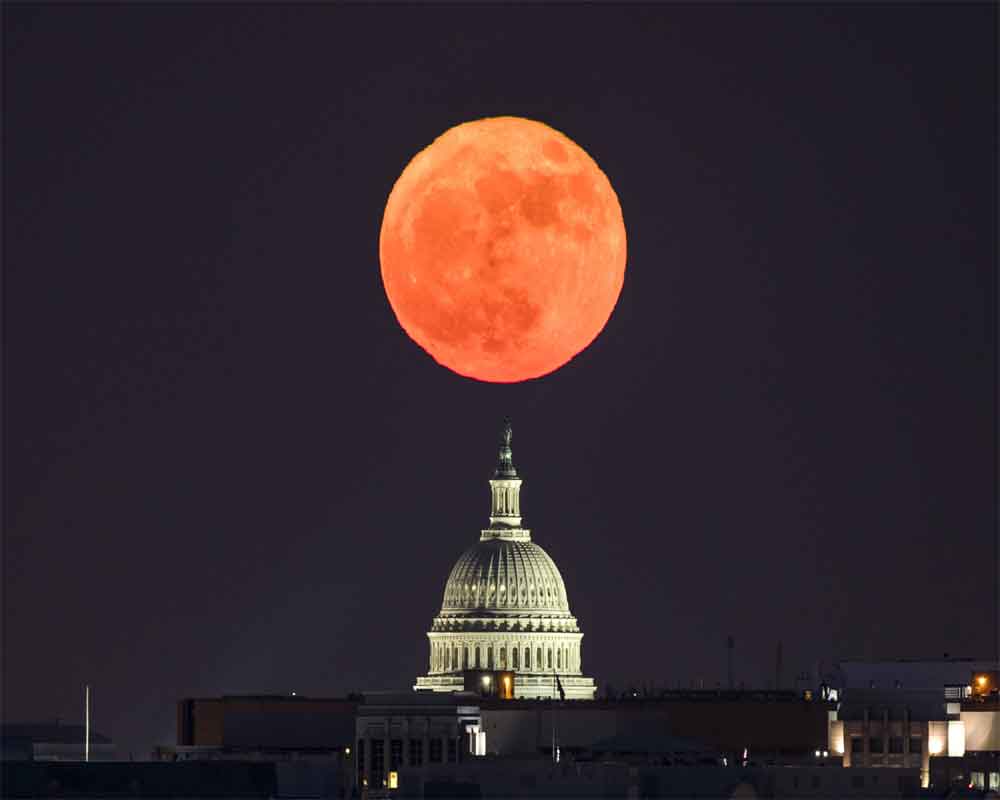Stargazers are in for a treat as skies are set for a series of celestial events on Sunday evening, including total lunar eclipse, super blood Moon and a "Wolf Moon" or Super Blood Wolf Moon.
It is a super blood Moon - "super" because the Moon will be closest to Earth in its orbit during the full Moon and "blood" because the total lunar eclipse will turn the Moon a reddish hue.
The lunar eclipse will last over 60 minutes, and will not be visible from India.
"The Super Blood Wolf Moon will be visible for its entirety in North and South America on January 20-21," US space agency NASA said in a statement.
During a lunar eclipse, the Moon passes through two distinct parts of Earth's shadow. The outer part of the cone-shaped shadow is called the penumbra. The penumbra is less dark than the inner part of the shadow because it is penetrated by some sunlight. The inner part of the shadow, known as the umbra, is much darker because Earth blocks additional sunlight from entering the umbra.
At 9.36 p.m. EST on January 20, the edge of the Moon will begin entering the penumbra. At 10.33 p.m. EST, the edge of the Moon will begin entering the umbra.
At 11.41 p.m. EST, the Moon will be completely inside the umbra, marking the beginning of the total lunar eclipse. The moment of greatest eclipse, when the Moon is halfway through the umbra, occurs at 12.12 a.m. EST.
Unlike solar eclipses, which require special glasses to view and can be seen only for a few minutes in a very limited area, a total lunar eclipse can be seen for about an hour by anyone on the nighttime side of Earth - as long as skies are clear, NASA said.
A variety of factors affect the appearance of the Moon during a total lunar eclipse. Clouds, dust, ash, photochemical droplets and organic material in the atmosphere can change how much light is refracted into the umbra, it said.
At 12.43 a.m. EST, the edge of the Moon will begin exiting the umbra and start moving into the opposite side of the penumbra. This marks the end of the total lunar eclipse.
At 1.50 a.m. EST, the Moon will be completely outside the umbra. It will continue moving out of the penumbra until the eclipse ends at 2.48 a.m. EST, NASA said.
The next total lunar eclipse is slated on May 26, 2021, and will be visible from North and South America, and East Asia.
Get ready for total lunar eclipse, Supermoon on Sunday evening
Sunday, 20 January 2019 | IANS
| Washington
Get ready for total lunar eclipse, Supermoon on Sunday evening
Sunday, 20 January 2019 | IANS | Washington





















